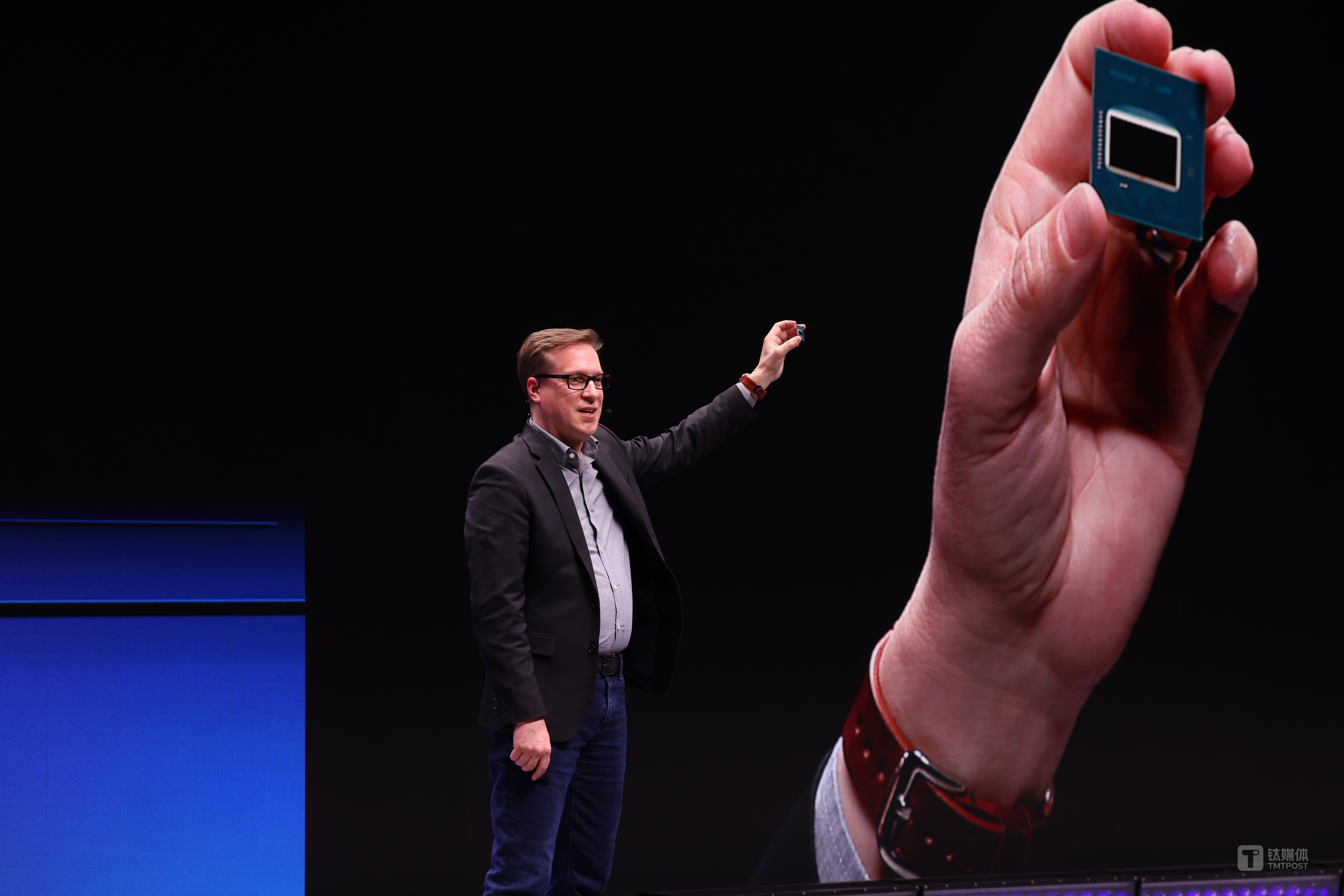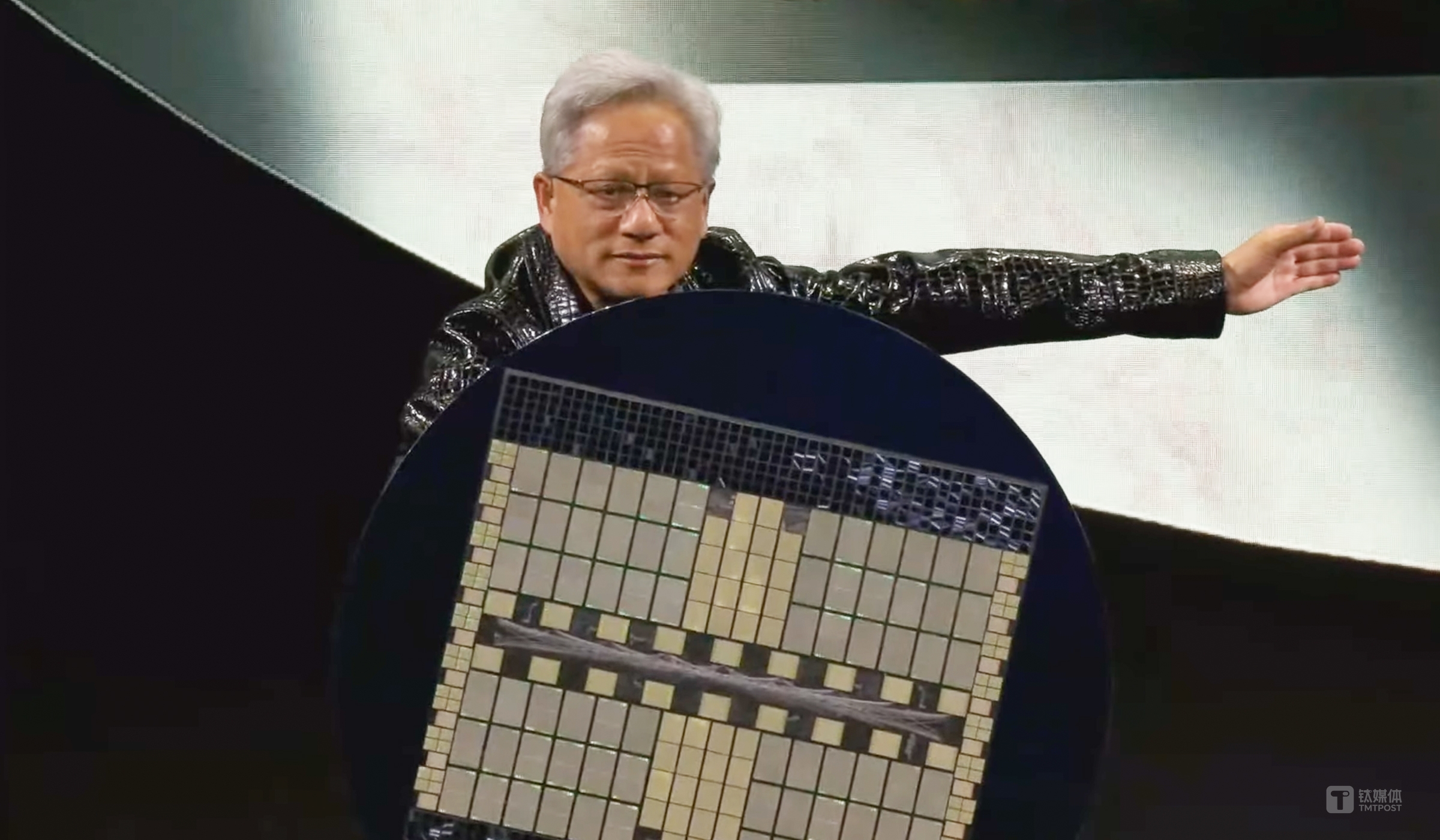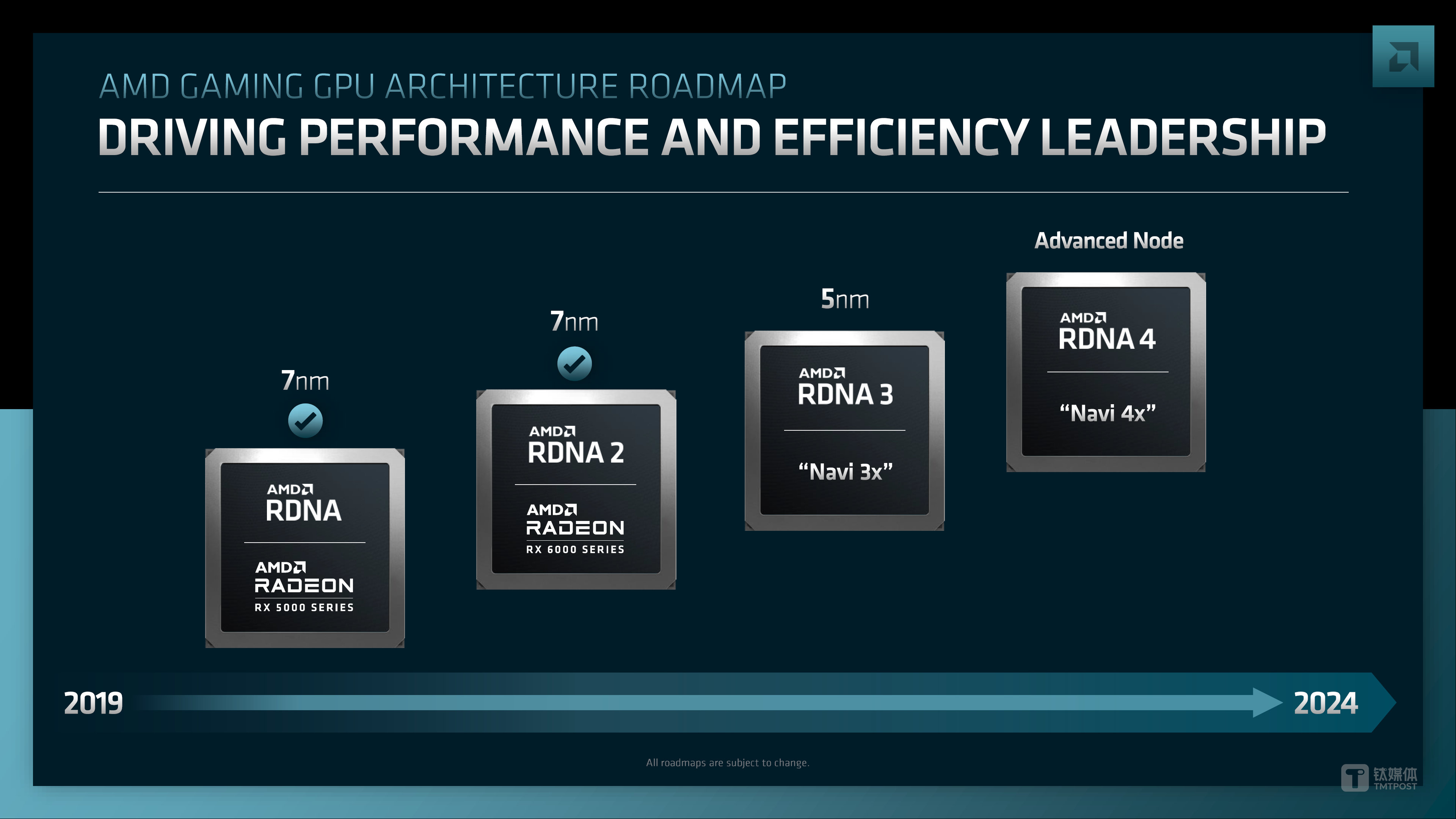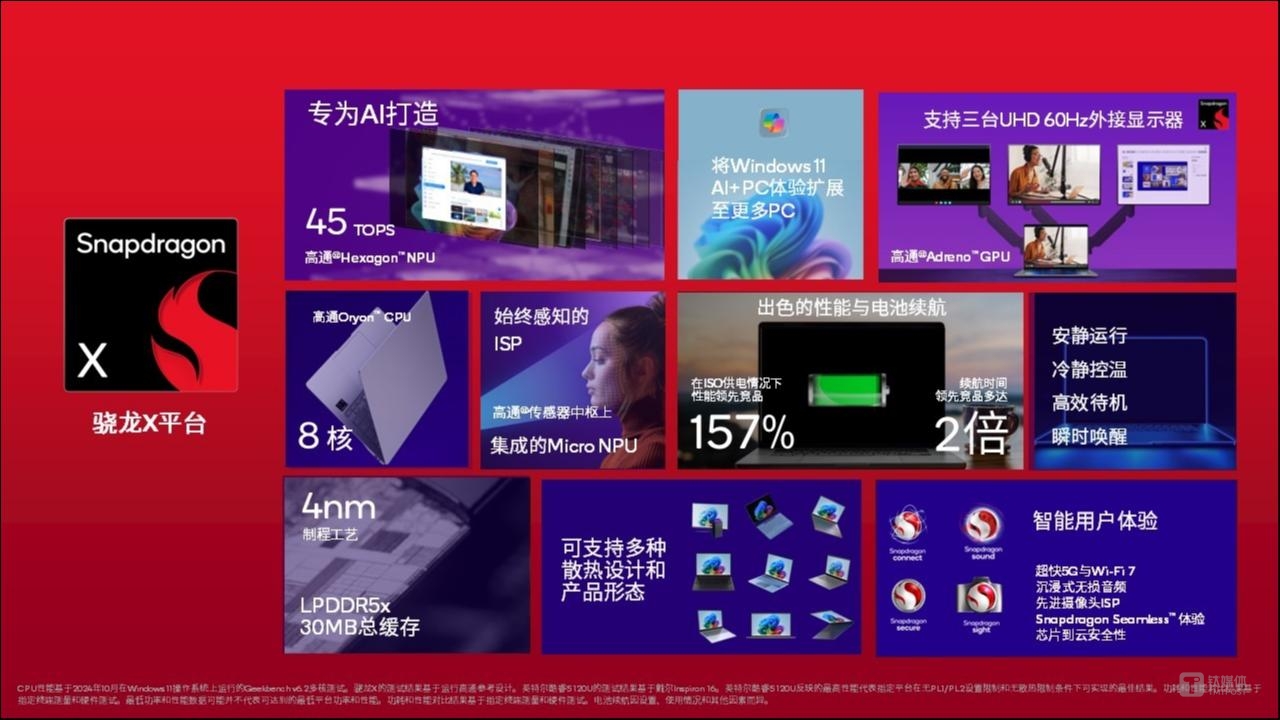CES 2025: Nvidia, Intel, AMD, and Qualcomm Unveil Cutting-Edge Innovations in AI and Computing
TMTPOST -- At CES 2025 in Las Vegas, Nvidia, Intel, AMD, and Qualcomm launched new chips designed to redefine the capabilities of consumer PCs, gaming systems, and enterprise solutions. From Nvidia’s groundbreaking Blackwell-based GeForce RTX 50 Series GPUs, to Intel’s AI-optimized Core Ultra processors, each company is making bold strides to solidify its position in a rapidly evolving market.
Intel
Intel showcased its latest high-performance mobile processors for commercial PCs at CES 2025. The company introduced its Intel 200V series processors, aimed at enterprise systems, as the industry prepares for the phase-out of Windows 10 support—a development expected to drive strong sales through 2025 and beyond.
The second-generation Core Ultra processor, known as the 200V, is engineered to perform on-device AI tasks while delivering improved battery life and enhanced performance compared to its predecessors. Intel first revealed the Core Ultra 200V for consumer PCs in September, and its enterprise debut underscores the company’s focus on AI-driven innovation for professional users.
Nvidia
Nvidia on Tuesday unveiled the most advanced consumer GPUs for gamers, creators and developers — the GeForce RTX™ 50 Series Desktop and Laptop GPUs.
Powered by the NvidiaBlackwell architecture, fifth-generation Tensor Cores and fourth-generation RT Cores, the GeForce RTX 50 Series delivers breakthroughs in AI-driven rendering, including neural shaders, digital human technologies, geometry and lighting.
The GeForce RTX 5090 GPU — the fastest GeForce RTX GPU to date — features 92 billion transistors, providing over 3,352 trillion AI operations per second (TOPS) of computing power. Blackwell architecture innovations and DLSS 4 mean the GeForce RTX 5090 GPU outperforms the GeForce RTX 4090 GPU by up to 2x.
The company also announced that it’s launching a personal AI supercomputer called Project Digits. The heart of Project Digits is the new GB10 Grace Blackwell Superchip, which packs enough processing power to run sophisticated AI models while being compact enough to fit on a desk and run from a standard power outlet (this kind of processing power used to require much larger, more power-hungry systems). This desktop-sized system can handle AI models with up to 200 billion parameters, and has a starting price of $3,000. The product itself looks a lot like a Mac Mini.
Nvidia DRIVE Hyperion AV platform, built on the new Nvidia AGX Thor system-on-a-chip (SoC), designed for generative AI models and delivering advanced functional safety and autonomous driving capabilities.
Nvidia and its partners have launched AI Blueprints for agentic AI, including PDF-to-podcast for efficient research and video search and summarization for analyzing large quantities of video and images — enabling developers to build, test and run AI agents anywhere.
AMD
AMD introduced its latest advancements in AI and gaming technology at CES 2025. The company announced a range of new processors, including the Ryzen AI Max, as well as the Ryzen AI 300 and Ryzen AI 200 CPUs designed for AI-enabled PCs. Additionally, AMD introduced high-performance chips for gaming desktops, laptops, and handheld gaming systems.
These new releases position AMD to intensify competition with rivals Intel and Qualcomm in the emerging AI PC sector, while also bolstering its standing in the desktop and mobile gaming markets—key battlegrounds for the semiconductor giant.
The Ryzen AI Max chips, tailored for high-performance laptops targeting gamers and content creators, promise up to 128GB of unified memory and a neural processing unit capable of handling up to 50 TOPS (trillions of operations per second), underscoring AMD’s commitment to delivering cutting-edge performance.
Qualcomm
Qualcomm is doubling down on its expansion into the PC market with the unveiling of its new Snapdragon X chip at CES 2025. Designed for mid-range laptops and desktops, the Snapdragon X is set to hit the market this month. It marks the fourth installment in Qualcomm's Snapdragon X lineup, following the Snapdragon X Plus 8-core, Snapdragon X Plus, and the flagship Snapdragon X Elite.
Built using a 4-nanometer process, the Arm-based Snapdragon X chip boasts eight CPU cores and delivers up to 45 TOPS (trillions of operations per second), a metric that underscores its ability to handle AI workloads efficiently. Its capabilities place it under Microsoft’s Copilot+PC program, enabling it to run AI applications like Recall and Click to Do directly on the device.
AI PCs, a rapidly growing segment, can process AI tasks natively without relying solely on cloud computing. While these devices can still leverage the cloud, they excel at running applications such as photo editing and text summarization locally, which would otherwise demand significant processing power on traditional PCs.
Disclaimer: Investing carries risk. This is not financial advice. The above content should not be regarded as an offer, recommendation, or solicitation on acquiring or disposing of any financial products, any associated discussions, comments, or posts by author or other users should not be considered as such either. It is solely for general information purpose only, which does not consider your own investment objectives, financial situations or needs. TTM assumes no responsibility or warranty for the accuracy and completeness of the information, investors should do their own research and may seek professional advice before investing.





